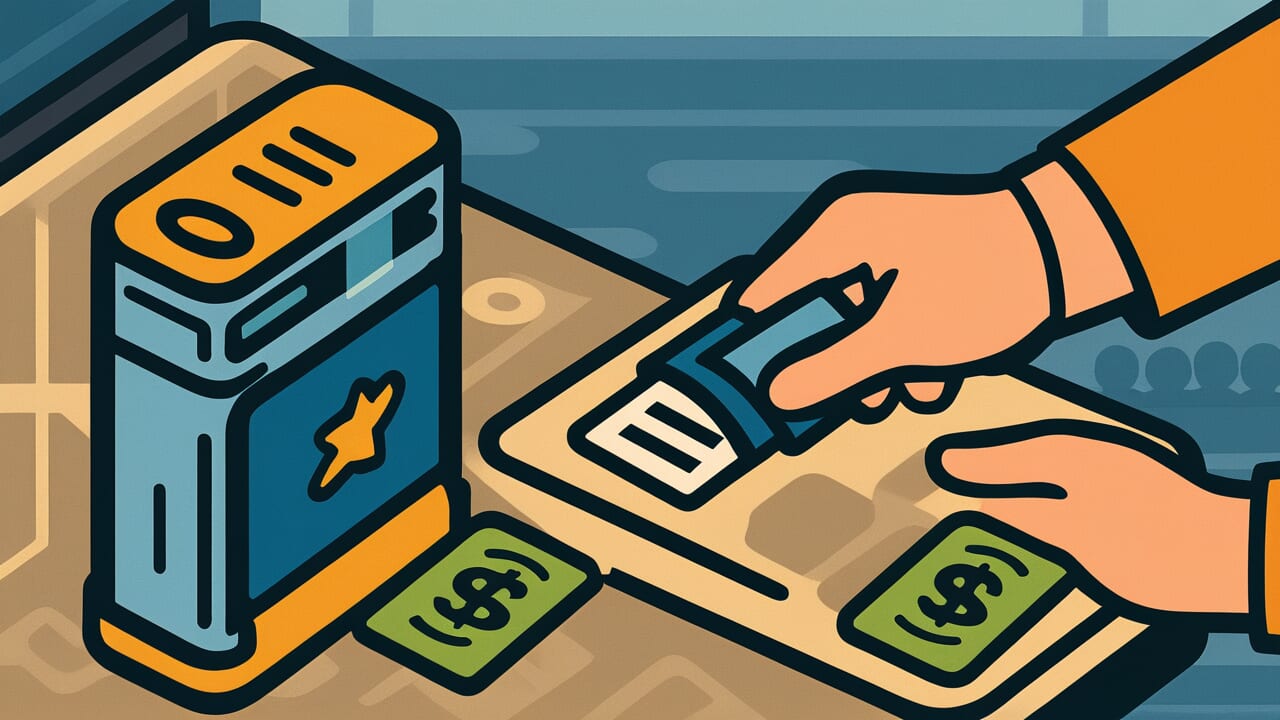How to Read “you get what you pay for”
“You get what you pay for”
[yoo get wot yoo pay for]
All words use common pronunciation.
Meaning of “you get what you pay for”
Simply put, this proverb means that the quality of something usually matches how much you spend on it.
The basic idea is straightforward. When you pay more money, you typically receive better quality. When you pay less, you often get lower quality. This connects price directly to value. The proverb suggests this relationship is reliable and predictable.
We use this saying when cheap purchases disappoint us. If someone buys bargain shoes that fall apart quickly, others might say this phrase. It also applies when expensive items work well for years. The proverb covers everything from food to electronics to services. It reminds us that low prices often come with hidden costs.
What’s interesting is how this wisdom balances two human desires. We all want to save money and get great quality. But the proverb suggests we usually can’t have both. It teaches us to think about long-term value instead of just upfront costs. This helps explain why some expensive purchases actually save money over time.
Origin and Etymology
The exact origin of this phrase is unknown, but similar ideas appear in writings from several centuries ago. The concept connects to basic marketplace principles that people have understood for generations. Early versions focused on the relationship between cost and craftsmanship in traditional trades.
This type of saying became important as commerce grew more complex. When people lived in small communities, they knew their craftsmen personally. As markets expanded and strangers sold goods, buyers needed simple rules to guide purchases. Proverbs like this helped people navigate unfamiliar transactions and avoid costly mistakes.
The phrase spread through English-speaking countries as trade increased. It gained popularity during periods of industrial growth when mass production created more quality differences. The saying helped consumers understand why identical-looking products might have different prices. Today it remains relevant as global markets offer countless purchasing choices.
Interesting Facts
The phrase demonstrates a direct cause-and-effect structure common in English proverbs. This grammatical pattern makes the relationship between payment and quality seem inevitable and natural.
The concept appears in various forms across many languages, suggesting it reflects universal marketplace experience. Different cultures express the same basic truth using their own words and examples.
The proverb uses “get” twice with different meanings – first as “receive” and second as “obtain” – creating a linguistic balance that makes the phrase memorable and rhythmic.
Usage Examples
- Customer to store clerk: “This cheap phone broke after two weeks – you get what you pay for.”
- Manager to employee: “That discount contractor did sloppy work on our office renovation – you get what you pay for.”
Universal Wisdom
This proverb reveals a fundamental tension in human nature between our desire for quality and our instinct to conserve resources. Throughout history, people have needed to balance these competing drives to survive and thrive. Those who spent too freely risked poverty, while those who were too cheap often ended up with tools, food, or shelter that failed when needed most.
The wisdom reflects an evolutionary advantage in understanding true cost. Our ancestors learned that the cheapest option often carried hidden risks. A poorly made weapon might break in battle. Spoiled food could cause illness. Flimsy shelter might collapse in storms. This proverb encodes the survival lesson that quality often determines outcomes, and quality requires investment.
The saying also captures how markets naturally sort themselves. Skilled craftsmen who used better materials and spent more time on their work needed higher prices to survive. Customers who understood this relationship got better products and built lasting relationships with reliable providers. This created a feedback loop where quality and fair pricing supported each other, benefiting both buyers and sellers who understood the connection.
When AI Hears This
When people buy expensive items, they’re not just purchasing products. They’re buying social protection from being judged as foolish. Price becomes a shield against criticism from friends and family. If an expensive purchase works well, the buyer looks smart. If it fails, at least they “tried their best.”
This creates a hidden social game around spending decisions. People fear looking cheap more than actually being wasteful. The proverb teaches us to spend more to avoid social embarrassment. We use other people’s money choices to judge their character. Higher prices make us feel safer about our decisions.
Humans have turned shopping into a form of social insurance. Paying more reduces the risk of looking stupid later. This seems wasteful but actually makes perfect sense socially. The extra money buys peace of mind and respect. It’s a clever way to manage reputation through spending choices.
Lessons for Today
Understanding this wisdom means recognizing when to prioritize long-term value over short-term savings. The key insight is learning to calculate true cost, not just purchase price. When something will be used frequently or safety matters, investing more upfront often saves money and frustration later. However, for items used rarely or temporarily, the cheapest option might make perfect sense.
In relationships and collaborations, this principle applies to the effort and resources people invest. Teams that invest time in planning and communication typically achieve better results than those rushing to save time. Similarly, relationships that receive consistent attention and care tend to be stronger and more reliable than those maintained with minimal effort.
At a community level, this wisdom suggests that underfunding important services or infrastructure often creates larger problems later. Schools, roads, and public safety require adequate investment to function well. Communities that try to save money by cutting essential services frequently discover that poor outcomes cost more to fix than proper funding would have cost initially. The challenge lies in recognizing which investments truly matter and finding sustainable ways to fund them appropriately.



Comments